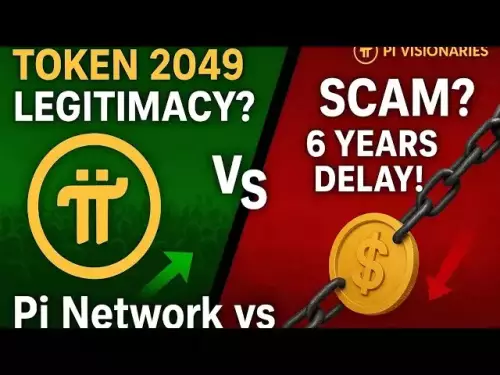-
 bitcoin
bitcoin $114779.865156 USD
2.30% -
 ethereum
ethereum $4226.519789 USD
2.39% -
 tether
tether $1.000545 USD
0.04% -
 xrp
xrp $2.890223 USD
0.92% -
 bnb
bnb $1030.029301 USD
2.95% -
 solana
solana $212.824944 USD
1.69% -
 usd-coin
usd-coin $0.999757 USD
0.01% -
 dogecoin
dogecoin $0.234961 USD
-0.27% -
 tron
tron $0.337174 USD
0.42% -
 cardano
cardano $0.804783 USD
0.09% -
 hyperliquid
hyperliquid $45.748770 USD
-2.85% -
 chainlink
chainlink $21.699170 USD
0.82% -
 ethena-usde
ethena-usde $1.001452 USD
0.08% -
 avalanche
avalanche $30.237800 USD
1.14% -
 stellar
stellar $0.372604 USD
1.52%
Why does DeFi lending rate fluctuate? What determines it?
DeFi lending rates fluctuate due to supply and demand, utilization rates, risk, collateral quality, platform algorithms, and broader market conditions.
May 18, 2025 at 06:56 pm
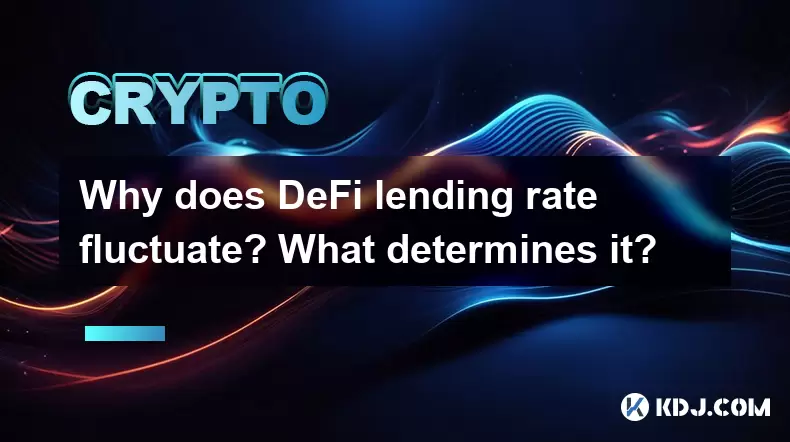
The world of decentralized finance (DeFi) has introduced a new paradigm in lending and borrowing, characterized by fluctuating lending rates. Understanding why DeFi lending rates fluctuate and what determines them is crucial for anyone looking to participate in this ecosystem. In this article, we delve into the intricacies of DeFi lending rates, exploring the factors that cause their fluctuations and the mechanisms that determine them.
The Basics of DeFi Lending Rates
DeFi lending rates refer to the interest rates that users pay or receive when they borrow or lend cryptocurrencies on decentralized platforms. Unlike traditional banking systems, where interest rates are often set by central banks or financial institutions, DeFi lending rates are determined by the dynamics of supply and demand within the platform.
Supply and Demand Dynamics
The most fundamental factor influencing DeFi lending rates is the balance between the supply of funds available for lending and the demand for borrowing these funds. When there is a high demand for borrowing but a limited supply of lendable assets, the lending rates tend to increase. Conversely, when there is an abundance of lendable assets but low demand for borrowing, the rates tend to decrease.
- High Demand, Low Supply: If many users want to borrow a specific cryptocurrency but few are willing to lend it, the interest rates for that asset will rise as borrowers compete for the limited available funds.
- Low Demand, High Supply: If there are plenty of assets available for lending but few users looking to borrow, the interest rates will fall as lenders compete to attract borrowers.
Utilization Rates
Another key determinant of DeFi lending rates is the utilization rate of the lending pool. The utilization rate is the percentage of the total assets in the pool that are currently borrowed. When the utilization rate is high, it indicates that most of the available funds are being used, which can drive up lending rates. Conversely, a low utilization rate suggests that there are plenty of unused funds, which can lead to lower rates.
- High Utilization Rate: A high utilization rate signals strong demand for borrowing, pushing up the lending rates to reflect the scarcity of available funds.
- Low Utilization Rate: A low utilization rate indicates an excess of lendable assets, leading to lower lending rates as lenders try to encourage borrowing.
Risk and Collateral
The risk associated with lending and the quality of collateral also play significant roles in determining DeFi lending rates. Platforms typically adjust lending rates based on the perceived risk of the loan and the value of the collateral provided by the borrower.
- Risk Assessment: Higher-risk loans, such as those with volatile collateral or borrowers with a history of defaults, will generally have higher interest rates to compensate lenders for the increased risk.
- Collateral Value: The value and stability of the collateral can influence lending rates. If the collateral is highly volatile or its value is uncertain, the lending rates may be higher to account for the potential risk of liquidation.
Protocol-Specific Factors
Each DeFi lending platform has its own set of rules and algorithms that can affect lending rates. These protocol-specific factors can include the interest rate model, the platform's governance decisions, and the incentives offered to users.
- Interest Rate Model: Different platforms use various models to calculate interest rates. Some may use a simple supply and demand algorithm, while others might incorporate more complex factors like time-based adjustments or risk premiums.
- Governance Decisions: The community or governance body of a DeFi platform can influence lending rates through decisions on protocol upgrades, fee structures, and other parameters.
- Incentives: Some platforms offer incentives such as token rewards to lenders and borrowers, which can affect the overall dynamics of lending rates by encouraging more participation.
Market Conditions and External Factors
DeFi lending rates are also influenced by broader market conditions and external factors. These can include changes in the overall cryptocurrency market, macroeconomic events, and regulatory developments.
- Cryptocurrency Market Trends: Fluctuations in the prices of cryptocurrencies can impact lending rates. For example, a sudden drop in the price of a popular collateral asset might lead to higher lending rates as the risk of liquidation increases.
- Macroeconomic Events: Economic events such as inflation rates, interest rate changes by central banks, or global financial crises can influence the demand for borrowing and lending in DeFi platforms.
- Regulatory Developments: Changes in regulations related to cryptocurrencies and DeFi can affect lending rates by altering the perceived risk and attractiveness of participating in these platforms.
Liquidity and Platform-Specific Liquidity Pools
The liquidity within a DeFi platform and the specific liquidity pools used for lending and borrowing also play a crucial role in determining lending rates. Platforms with higher liquidity tend to have more stable and potentially lower lending rates, as there is a greater buffer to absorb fluctuations in supply and demand.
- High Liquidity: Platforms with high liquidity can offer more competitive lending rates because they can handle larger volumes of transactions without significant rate changes.
- Liquidity Pools: The size and health of specific liquidity pools can affect lending rates. A well-funded pool with diverse assets can maintain lower rates, while a smaller or less diverse pool might experience more volatility in rates.
Frequently Asked Questions
Q: How can I predict changes in DeFi lending rates?A: Predicting changes in DeFi lending rates can be challenging due to their dynamic nature. However, you can monitor key indicators such as the utilization rate of lending pools, the overall supply and demand for specific assets, and broader market trends. Keeping an eye on platform-specific announcements and governance decisions can also provide insights into potential rate changes.
Q: Are there any tools or platforms that help track DeFi lending rates?A: Yes, several tools and platforms are available to track DeFi lending rates. Websites like DeFi Pulse, DeFi Rate, and platforms like Aave and Compound provide real-time data on lending rates across various DeFi protocols. These tools can help you stay informed about current rates and trends.
Q: Can I benefit from fluctuating DeFi lending rates?A: Yes, you can potentially benefit from fluctuating DeFi lending rates. As a lender, you might earn higher returns when rates are high due to increased demand for borrowing. As a borrower, you could take advantage of lower rates to access funds more cheaply. However, it's important to manage the risks associated with rate fluctuations, such as potential liquidations if rates rise sharply.
Q: How do DeFi lending rates compare to traditional lending rates?A: DeFi lending rates can be significantly different from traditional lending rates. While traditional rates are often influenced by central bank policies and economic conditions, DeFi rates are driven by supply and demand dynamics within the platform. DeFi rates can be more volatile but also offer the potential for higher returns for lenders and more competitive rates for borrowers, depending on market conditions.
Disclaimer:info@kdj.com
The information provided is not trading advice. kdj.com does not assume any responsibility for any investments made based on the information provided in this article. Cryptocurrencies are highly volatile and it is highly recommended that you invest with caution after thorough research!
If you believe that the content used on this website infringes your copyright, please contact us immediately (info@kdj.com) and we will delete it promptly.
- BlockDAG, DOGE, HYPE Sponsorship: Crypto Trends Shaping 2025
- 2025-10-01 00:25:13
- Deutsche Börse and Circle: A StableCoin Adoption Powerhouse in Europe
- 2025-10-01 00:25:13
- BlockDAG's Presale Buzz: Is It the Crypto to Watch in October 2025?
- 2025-10-01 00:30:13
- Bitcoin, Crypto, and IQ: When Genius Meets Digital Gold?
- 2025-10-01 00:30:13
- Stablecoins, American Innovation, and Wallet Tokens: The Next Frontier
- 2025-10-01 00:35:12
- NBU, Coins, and Crypto in Ukraine: A New Yorker's Take
- 2025-10-01 00:45:14
Related knowledge

How to track DeFi activity on a block explorer
Sep 04,2025 at 05:36pm
Bitcoin's Role in Decentralized Finance1. Bitcoin remains the cornerstone of the cryptocurrency ecosystem, serving as both a store of value and a benc...
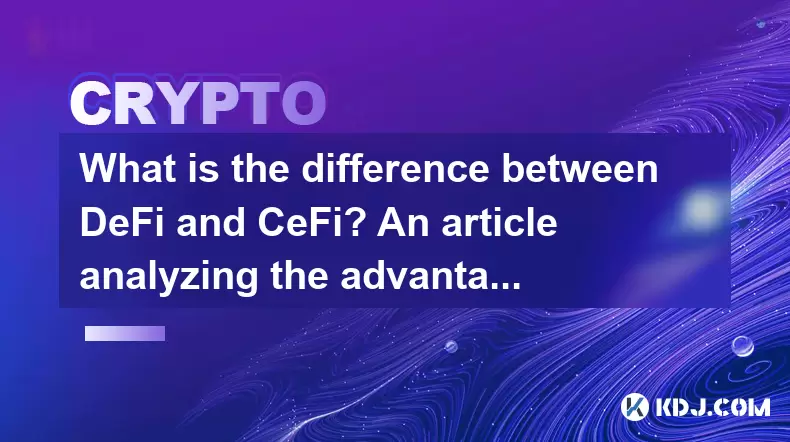
What is the difference between DeFi and CeFi? An article analyzing the advantages and disadvantages of both
Jun 13,2025 at 03:57am
Understanding the Foundations of DeFi and CeFiTo fully grasp the difference between DeFi (Decentralized Finance) and CeFi (Centralized Finance), it’s ...
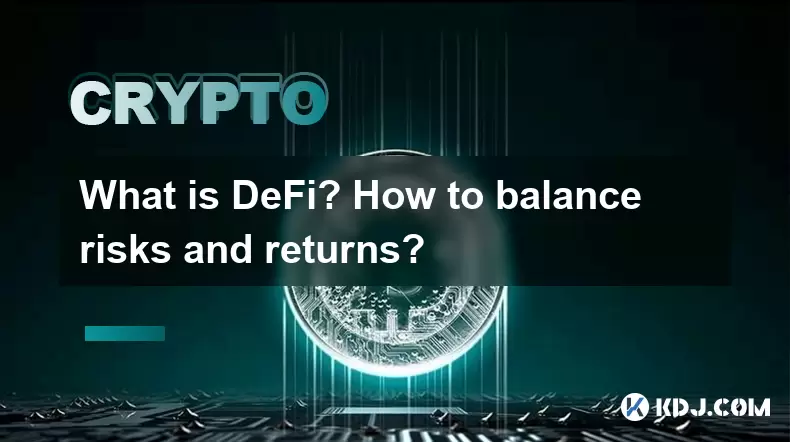
What is DeFi? How to balance risks and returns?
May 31,2025 at 12:22pm
What is DeFi? How to Balance Risks and Returns? Decentralized Finance, commonly known as DeFi, represents a revolutionary shift in the financial ecosy...
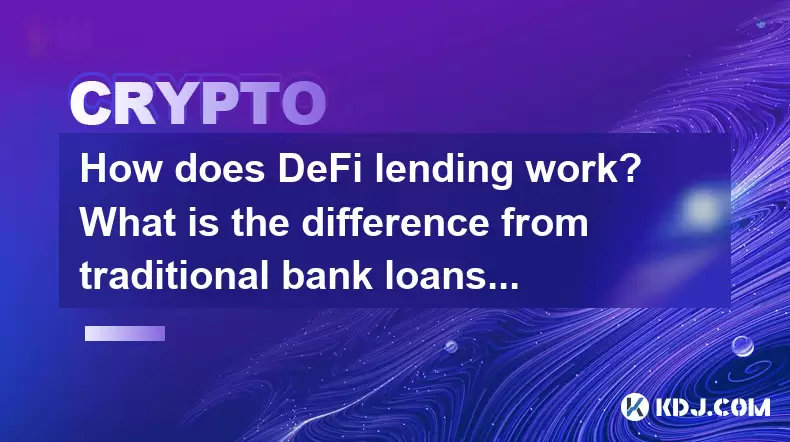
How does DeFi lending work? What is the difference from traditional bank loans?
May 29,2025 at 05:36pm
Introduction to DeFi LendingDeFi lending, or decentralized finance lending, represents a revolutionary shift in the way borrowing and lending are cond...
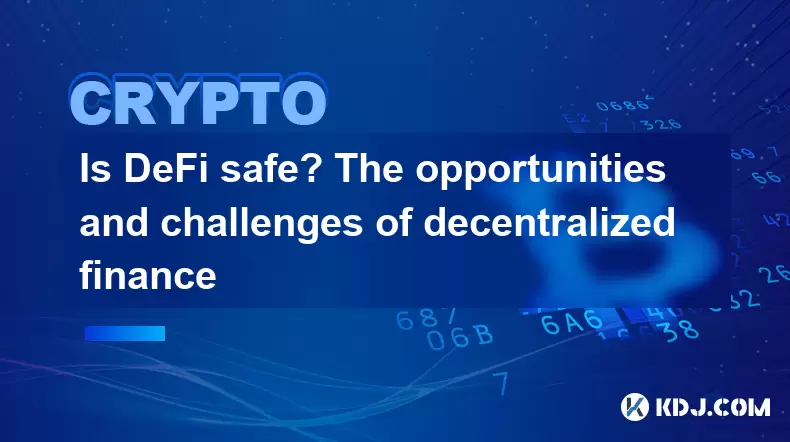
Is DeFi safe? The opportunities and challenges of decentralized finance
May 27,2025 at 02:28pm
Decentralized Finance, commonly known as DeFi, has revolutionized the financial landscape by offering a range of financial services without the need f...
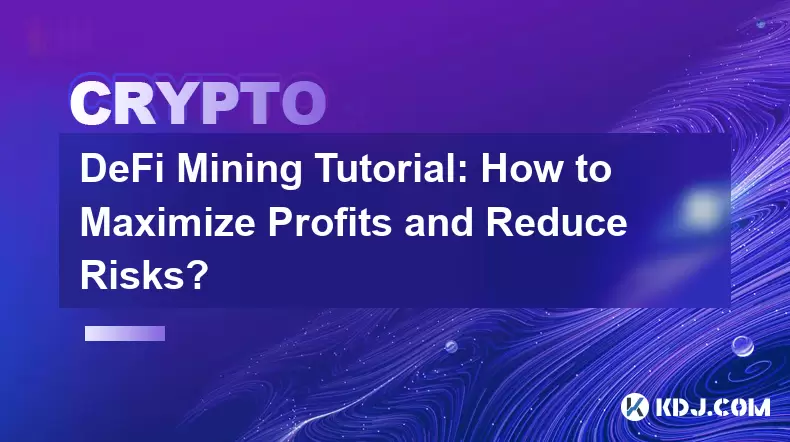
DeFi Mining Tutorial: How to Maximize Profits and Reduce Risks?
May 27,2025 at 07:42am
DeFi, or Decentralized Finance, has opened up a new world of opportunities for crypto enthusiasts looking to maximize their profits through various mi...

How to track DeFi activity on a block explorer
Sep 04,2025 at 05:36pm
Bitcoin's Role in Decentralized Finance1. Bitcoin remains the cornerstone of the cryptocurrency ecosystem, serving as both a store of value and a benc...

What is the difference between DeFi and CeFi? An article analyzing the advantages and disadvantages of both
Jun 13,2025 at 03:57am
Understanding the Foundations of DeFi and CeFiTo fully grasp the difference between DeFi (Decentralized Finance) and CeFi (Centralized Finance), it’s ...

What is DeFi? How to balance risks and returns?
May 31,2025 at 12:22pm
What is DeFi? How to Balance Risks and Returns? Decentralized Finance, commonly known as DeFi, represents a revolutionary shift in the financial ecosy...

How does DeFi lending work? What is the difference from traditional bank loans?
May 29,2025 at 05:36pm
Introduction to DeFi LendingDeFi lending, or decentralized finance lending, represents a revolutionary shift in the way borrowing and lending are cond...

Is DeFi safe? The opportunities and challenges of decentralized finance
May 27,2025 at 02:28pm
Decentralized Finance, commonly known as DeFi, has revolutionized the financial landscape by offering a range of financial services without the need f...

DeFi Mining Tutorial: How to Maximize Profits and Reduce Risks?
May 27,2025 at 07:42am
DeFi, or Decentralized Finance, has opened up a new world of opportunities for crypto enthusiasts looking to maximize their profits through various mi...
See all articles





















